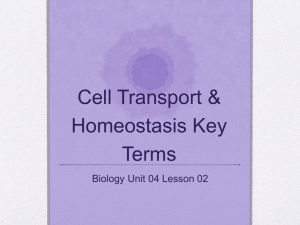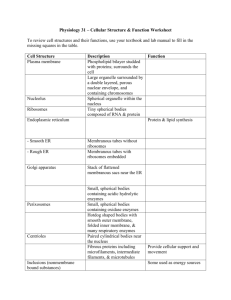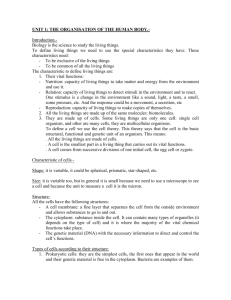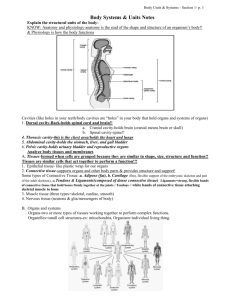CELLS -> TISSUES -> ORGANS
advertisement
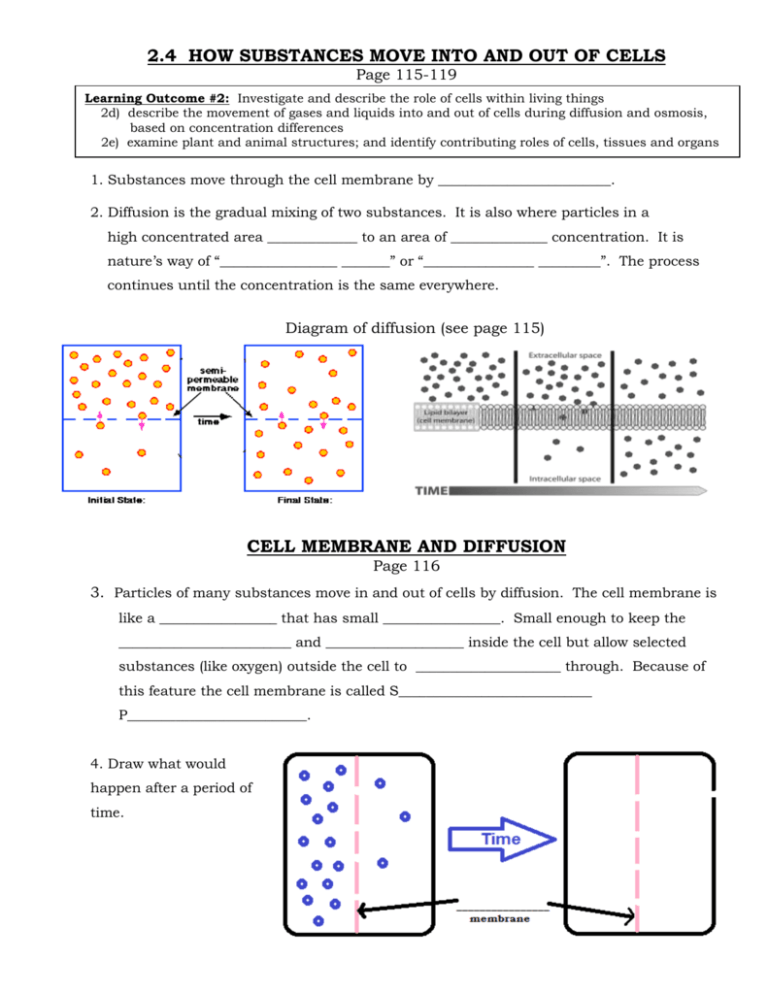
2.4 HOW SUBSTANCES MOVE INTO AND OUT OF CELLS Page 115-119 Learning Outcome #2: Investigate and describe the role of cells within living things 2d) describe the movement of gases and liquids into and out of cells during diffusion and osmosis, based on concentration differences 2e) examine plant and animal structures; and identify contributing roles of cells, tissues and organs 1. Substances move through the cell membrane by _________________________. 2. Diffusion is the gradual mixing of two substances. It is also where particles in a high concentrated area _____________ to an area of ______________ concentration. It is nature’s way of “_________________ _______” or “________________ _________”. The process continues until the concentration is the same everywhere. Diagram of diffusion (see page 115) CELL MEMBRANE AND DIFFUSION Page 116 3. Particles of many substances move in and out of cells by diffusion. The cell membrane is like a _________________ that has small _________________. Small enough to keep the _________________________ and ____________________ inside the cell but allow selected substances (like oxygen) outside the cell to _____________________ through. Because of this feature the cell membrane is called S____________________________ P__________________________. 4. Draw what would happen after a period of time. 5. Cells need certain materials in order to survive. Oxygen is needed by the mitochondria. Oxygen particles are small enough to diffuse through the cell membrane. This movement occurs because the concentration of oxygen is _______________ outside the cell than inside the cell. 5. Water particles are also small enough to diffuse through the cell membrane. Water in the ground is needed in the leaves of a plant for photosynthesis. Water gets there by the process called _________________________ (a special name given for the _____________________ of water across a membrane) 2.5 CELLS in MULTICELLULAR ORGANISMS = TISSUE ORGANS Page 120-124 1. Why are unicellular cells tiny? 2. When unicellular organisms get too large they reproduce. Diagram out the reproduction of an amoeba by BINARY FISSION. (page 121) 3. How do your cells reproduce? This process is needed for growth, development and repair of cells. 4. You and most multicellular organisms have cells that are made up of ___________________ cells. These cells carry out a ___________________ _________________ or functions needed to support _____________________. 5. An example of a specialized cell is your red blood cell. What is your red blood cells special function? 6. Red blood cells do not reproduce by binary fission. What part of the cell controls cell division? 7. A group of specialized cells (similar structure and function) are called _____________________________. (pg 103) 8. A group of tissues that performs a special function is called an ________________, an example is ___________________. A group of organs that work together for a common purpose (to keep you alive) is called an ___________ _______________. Cells combine to form ___________________ which combine to form __________________. The network of several organs forms an _____________ system. (pg 103) 9. Complete the chart of the four types of human (animal) tissues and describe their main purpose. TISSUE PURPOSE/FOUND DIAGRAM Supports and connects different parts of the body Blood, fat, cartilage, bones and tendons Covers the surface of your body and the outside of your organs. Lines the inside of organs (intestines) Sends messages from place to place in body Makes up the brain, spinal cord and nerves Allows you to move- skeletal musclesCardiac tissue makes up the heart-pumps blood Lines organs, moves food along your digestive system 10. Name the plant tissues. If time look at the tissue types under the microscope.




